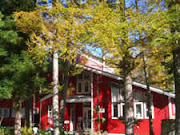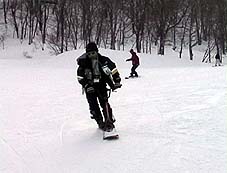I found some beautiful clips at YouTube, just would like to share some with everyone.
When I hear "Trans Alps Express", always these below pop up in my mind.
Glacier Express
Bernina Express
Glacier express runs via BVZ railway Brig station. It looks more like a stop of a tram rather than a normal railway station which confused me a bit when I traveled there.
Brig is an important location for transportation because we can go to Italy, also go to Interlaken direction and Lausanne, Geneve.
Scene from a train for Interlaken direction from Brig
Tracks go left direction at the first part of this clip above are the one for Lausanne, Geneve.
Trains for Interlaken direction start earning the height from here to go across the Europe Alps. When I traveled there, it was just a single track around the tunnel. Maybe their budget to construct the tunnel across the Europe Alps might have not been enough to make plural tracks.
Anyway, I feel it very comfortable to see this clip because the train runs in a very comfortable speed. As we are now used to Shinkansen ( bullet train ) and some super-express train in Japan, when I find this kind of speed, I can not help mentioning it.
You'll find some cars keep getting on a freight train at the end of this clip. They bring cars by trains. I am not sure there are tunnels for cars across the Europe Alps or not, but this kind of service is available there. Not in Japan.
Chur A locomotive pulls some passenger cars on a track in a paved road. Looks as if it runs in a tram track. Could not be in Japan....
Hayaokidori website
Monday, July 30, 2007
Thursday, July 26, 2007
Loverias
I like small sensitive flowers. This below is a "Azzuro compact" which I have found
this year for the first time. There are some other colors like marine blue and sky blue.

Usual loverias are not good at staying with humid weather, so usually they can not survive in rainy season here in Japan. This "Azzuro compact" seems to survive longer until around October.
I think "Azzuro" is an Italian word, so I think this Azzuro compact is originally from Italy. Not sure. Plural form is probably "Azzuri" as the Italian national soccer team is called.
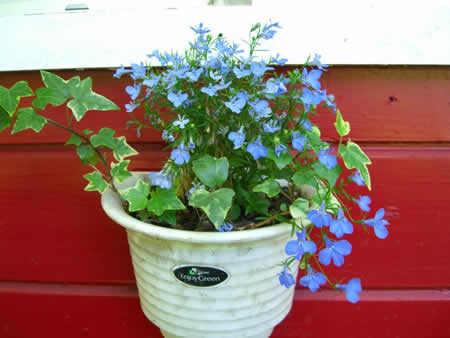
This blue one is a common loveria. It didn't survive in rainy season, already dead. :( The green leaves in the pot is a hedera, a kind of Ivy, I guess
I think I like small sensitive flowers like loverias, forget-me-not. Big flowers are not my cup of coffee, maybe because I have a big face lol...... You know, people always want something they don't have :p
The weather forcast for today was just cloudy but it was rainy until noon.
The hard thing to have some small flowers is you have to work hard to delete flowers which are dead to get more flowers. You really need to be careful to find all the dead flowers.
Hayaokidori website
this year for the first time. There are some other colors like marine blue and sky blue.

Usual loverias are not good at staying with humid weather, so usually they can not survive in rainy season here in Japan. This "Azzuro compact" seems to survive longer until around October.
I think "Azzuro" is an Italian word, so I think this Azzuro compact is originally from Italy. Not sure. Plural form is probably "Azzuri" as the Italian national soccer team is called.

This blue one is a common loveria. It didn't survive in rainy season, already dead. :( The green leaves in the pot is a hedera, a kind of Ivy, I guess
I think I like small sensitive flowers like loverias, forget-me-not. Big flowers are not my cup of coffee, maybe because I have a big face lol...... You know, people always want something they don't have :p
The weather forcast for today was just cloudy but it was rainy until noon.
The hard thing to have some small flowers is you have to work hard to delete flowers which are dead to get more flowers. You really need to be careful to find all the dead flowers.
Hayaokidori website
Sunday, July 22, 2007
Bonnet "Aizu"
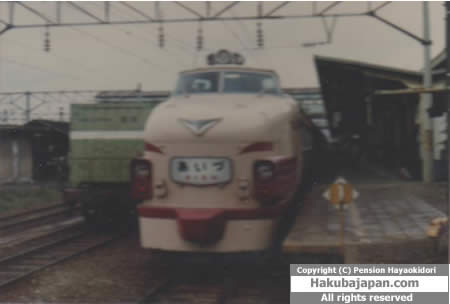
Picture taken at Aizu-Wakamatsu station somewhen around 1981 when I travelled around Tohoku region by myself. Tohoku Shinkansen (bullet train) was not in service yet at that time, a lot of express and limited express trains were in service for many directions from Ueno terminal at that time. Most of limited express trains at Tohoku main line were constituted by 12-13 passengers cars but due to the restriction at Ban'etsu-saisen line, Aizu had to be 9 or shorter. The shortest regular limted express train at Tohoku line at that time. This control car in the picture was the green car ( 1st class passenger car ) called "Kuro 481", but not sure if it was an original one or 50+ or 100+. Because of the slight difference up to when one is made, soemtimes JNR distinguished some from others by their number like Kuro 481-1, 481-2 etc (Original ), Kuro 481-51, 481-52 etc(reconstructed from Saro : a 1st class passenger car without a control room ) and Kuro 481-101, 481-102 etc( ones with bigger MG (Moter Generator). As it had a couple of whistle covers at its waists, it might be one of 100's but could be original or 50's because its main lights at its waists do not seem to be sealed beams, also it does not seem to have some "cover" at some holes at the side bottom to take air inside to cool the MG.
Hayaokidori website
Saturday, July 21, 2007
1,000 yen for underground?
... Not in Japan but in London, U.K. They raised the price a little bit before, now it costs 4 lbs for the minimun fare. Additionally , the lbs exchange rate against Japan yen has been strong for a while, it's now 1 lbs is more than 250 yen which means the minimum fare for the London underground is now more than 1,000 yen!
If a family totally had 4 adults, the total fare is 4,000 yen which might be more than the fare for a cab? Most European currencies have been strong against Japan yen recently, they say it will cost more than supposed when Japanese people have some tours around Europe this summer. Newspapers estimate some Japanese lunch plates will be 2,500 yen, a cup of coffee will be 510 yen and a hamberger will be 800 yen.
But I think it's just like to enter a phase to correct the rates because when I travelled around Europe in '82, 1 U.S. dollar was 270 yen, it was 240 yen in '84.
Now interests in Japan are very low, very high in Europe so people would like to raise some fund in Japan to employ in Europe to get some benefit which might cause
this situation that European currencies have been stronger against Japan yen.
And I don't think Japanese people need to worry too much. Even if a hamberger costs 800 yen in Europe, I guess it's much bigger than in Japan lol.... Because I found it that vegitables sold in markets there in Europe were way too huge!!! Cucumbers, egg plants etc were unbelievable huge to me.
Anyway, it will be fun to experience different things when you travel around especially when you travel somewhere in different culture. I also hope the foreign exchange rates against yen will not have been strong for ever, otherwise it will cost expensive for me to buy some model trains and its figures from Germany etc :p
I remember reading a description that said it was something like 1 U.K lbs = 1,008 Japan yen somewhen after the WW2 - must have been somewhen before the Smithsonian Agreement when it was a fixed exchange rate system, so British people seemed to be prosperous when they were in Japan. But.... if it still stays like that, the minimun fare for London underground would be more than 4,000 yen per person!! :o
Hayaokidori website
If a family totally had 4 adults, the total fare is 4,000 yen which might be more than the fare for a cab? Most European currencies have been strong against Japan yen recently, they say it will cost more than supposed when Japanese people have some tours around Europe this summer. Newspapers estimate some Japanese lunch plates will be 2,500 yen, a cup of coffee will be 510 yen and a hamberger will be 800 yen.
But I think it's just like to enter a phase to correct the rates because when I travelled around Europe in '82, 1 U.S. dollar was 270 yen, it was 240 yen in '84.
Now interests in Japan are very low, very high in Europe so people would like to raise some fund in Japan to employ in Europe to get some benefit which might cause
this situation that European currencies have been stronger against Japan yen.
And I don't think Japanese people need to worry too much. Even if a hamberger costs 800 yen in Europe, I guess it's much bigger than in Japan lol.... Because I found it that vegitables sold in markets there in Europe were way too huge!!! Cucumbers, egg plants etc were unbelievable huge to me.
Anyway, it will be fun to experience different things when you travel around especially when you travel somewhere in different culture. I also hope the foreign exchange rates against yen will not have been strong for ever, otherwise it will cost expensive for me to buy some model trains and its figures from Germany etc :p
I remember reading a description that said it was something like 1 U.K lbs = 1,008 Japan yen somewhen after the WW2 - must have been somewhen before the Smithsonian Agreement when it was a fixed exchange rate system, so British people seemed to be prosperous when they were in Japan. But.... if it still stays like that, the minimun fare for London underground would be more than 4,000 yen per person!! :o
Hayaokidori website
Tuesday, July 17, 2007
Making a layout #43 Sitting people vol.2

Some sitting people in a bench with a big coca cola ad. A kiosk cabin also got some ad boards on its roof.
Hayaokidori website
Monday, July 16, 2007
Natural disasters
A typhoon 4th hit Japan in this couple of days and when I thought the disaster was gone, an earthquake occured in the sea along Niigata prefecture today 10:13 a.m.
Some people passed away by the disasters and many were injured. I pray for the repose of their soul and pray any other disaster won't attack them.
I think we had better check where the refuge is for us if any disasters attacked. You never know when one occurs. It might do when all your family members are in different locations. If you all know the refuge, your all family members will get together there.
Here's an English reference how we should do in case of earthquake provided by Shibuya-ku office, Tokyo . Just a reference, I hope it helps you.
Hayaokidori website
Some people passed away by the disasters and many were injured. I pray for the repose of their soul and pray any other disaster won't attack them.
I think we had better check where the refuge is for us if any disasters attacked. You never know when one occurs. It might do when all your family members are in different locations. If you all know the refuge, your all family members will get together there.
Here's an English reference how we should do in case of earthquake provided by Shibuya-ku office, Tokyo . Just a reference, I hope it helps you.
Hayaokidori website
Saturday, July 14, 2007
Watching out fireflies in and around Hakuba
The other day, a firefly dropped in my house in accident. I hear they can survive only a week after they emerge. I slowly and patiently guided it to outside.
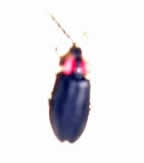
From around July 20th, an outdoor activity to watch out fireflies will be held here in Hakuba. They guide you to Lake Aoki, you have to roar a Canadian canoe for 12 passengers at the most. 3,500 yen per person for adults, 3,000 yen for elementary school children. Kindergarteners and youngers are not qualified for this event. Old local people here in Hakuba tells there used to be a lot of fireflies in Hakuba. It seemed they were decreasing but lately people protect them so they show up again in summer which is nice!
Hayaokidori website

From around July 20th, an outdoor activity to watch out fireflies will be held here in Hakuba. They guide you to Lake Aoki, you have to roar a Canadian canoe for 12 passengers at the most. 3,500 yen per person for adults, 3,000 yen for elementary school children. Kindergarteners and youngers are not qualified for this event. Old local people here in Hakuba tells there used to be a lot of fireflies in Hakuba. It seemed they were decreasing but lately people protect them so they show up again in summer which is nice!
Hayaokidori website
Wednesday, July 11, 2007
Making a layout #42 Around a beer house
Looks it's getting more and more stuff now.

Another table is now located in front of the beer house. Waiters and a waitress also joined. They are a presier figure set called "innkeepers".

A beer barrel wagon. I didn't hesitate to order this one at all when I found it. Hum... a beer barrel wagon and a beer house. Looks as if it were a heaven for heavy drinkers, not good :p (^^;;;;

A beer barrel wagon and a mizett. Wonder what the era is.. lol...

I put some sitting fitures in Luigi's pizzeria as well.

Also, at some terrace chairs, too.

Looks like this. I have to pave around once when I start making a tram track here. So now it's just a temporaly location for all figures.
Hayaokidori website

Another table is now located in front of the beer house. Waiters and a waitress also joined. They are a presier figure set called "innkeepers".

A beer barrel wagon. I didn't hesitate to order this one at all when I found it. Hum... a beer barrel wagon and a beer house. Looks as if it were a heaven for heavy drinkers, not good :p (^^;;;;

A beer barrel wagon and a mizett. Wonder what the era is.. lol...

I put some sitting fitures in Luigi's pizzeria as well.

Also, at some terrace chairs, too.

Looks like this. I have to pave around once when I start making a tram track here. So now it's just a temporaly location for all figures.
Hayaokidori website
Repairing steps in a trekking course
The other day we sight seeing association members in this area needed to adjust
something in a trekking course. This is an event held at this time of the year.
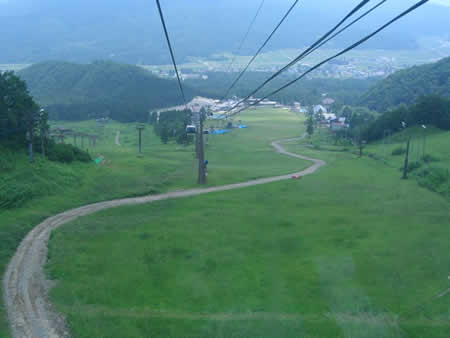
First of all, we got in a telecabin to go up to the Alps daira which is roughly 1500 meters above sea level.
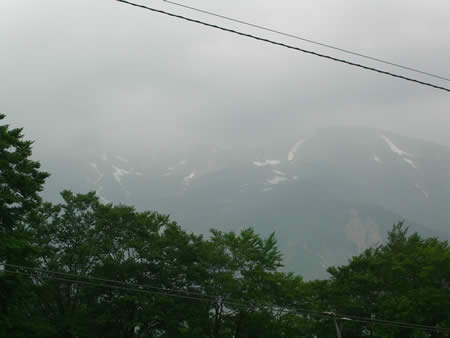
Not good visibility, barely saw some snow still stayed.
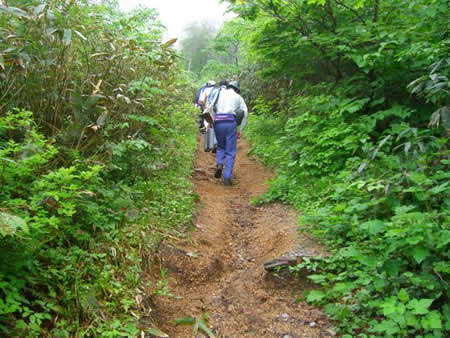
We only kept going on and on and on ...... Had to breath my own rythm, one two one two....
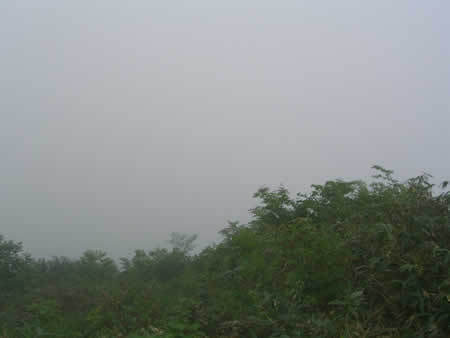
If it's fine, we can view the Japan North Alps mountains from this point but it was not :(
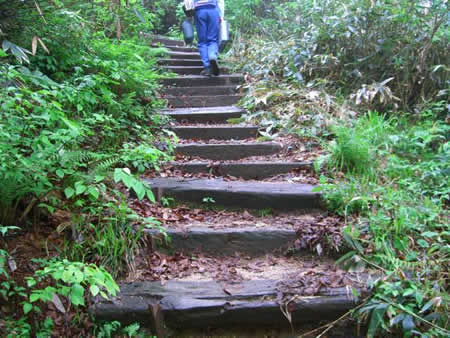
We needed to repair these steps.
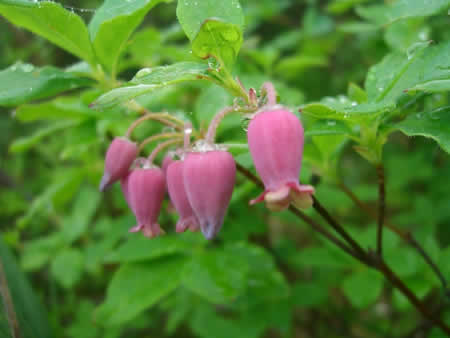
A lot of flowers and plants I don't know...
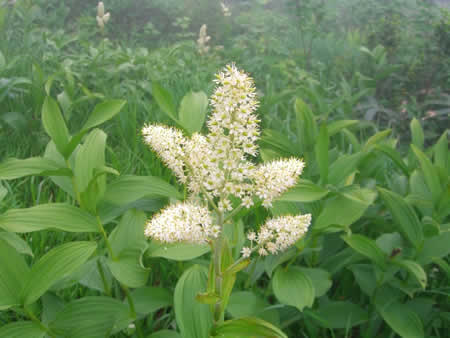
Time to start repairing.....
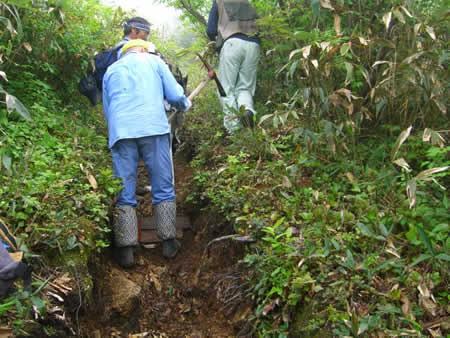
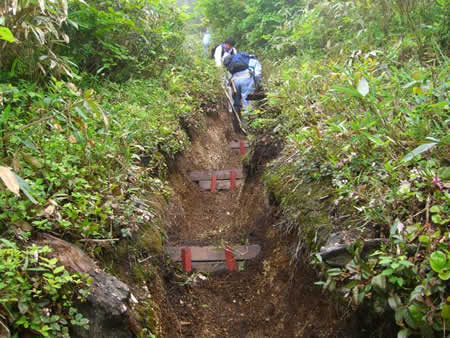
We repaired the steps one by one.
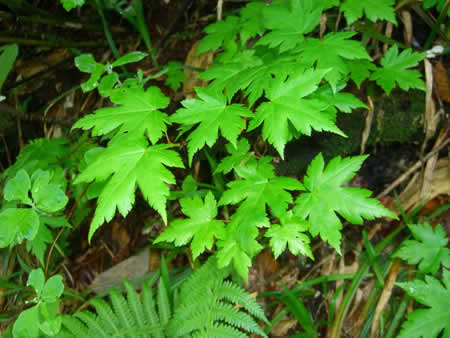
Many kinds of mountain plants at the both side of the course on the way back.
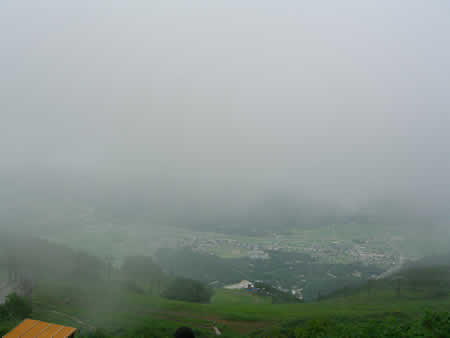
Finally I came down to Jizou Carn which is the top of Hakuba Goryu ski slope. My house is at the bottom of this ski slope which is roughly 930 meters lower in altitude.
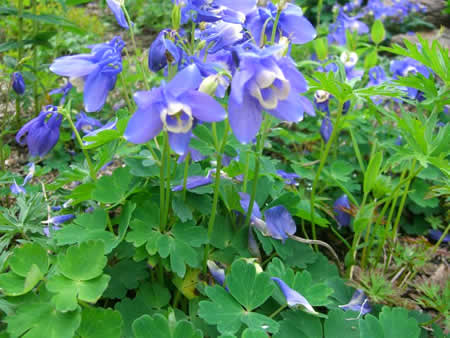
At the end of June, I introduced Komakusa was in bloom at the top of Hakuba Goryu ski slope, now other floweres are also in bloom.
This above is Miyama odamaki.
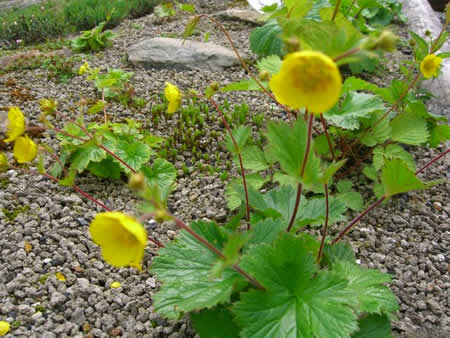
Miyama daikonsou
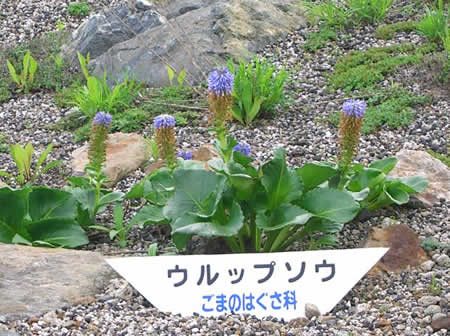
Uruppusou.
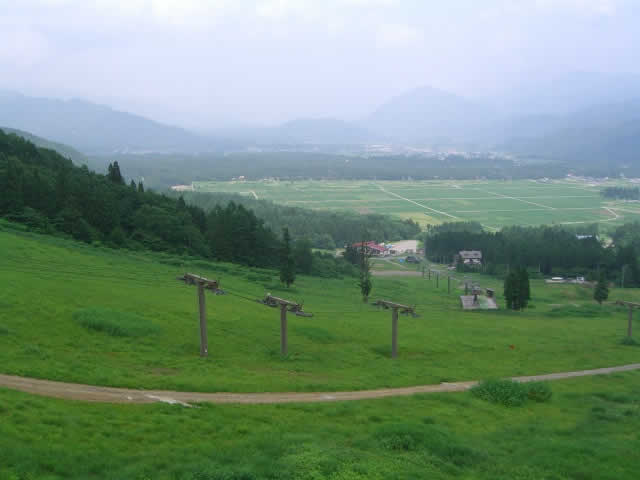
Coming down by telecabin. Ski slopes look all green in summer. Interesting thing is the slope looks steeper than in winter, I am not sure why. Maybe white is a color that makes us recognize slopes calmer ?
Hayaokidori website
something in a trekking course. This is an event held at this time of the year.

First of all, we got in a telecabin to go up to the Alps daira which is roughly 1500 meters above sea level.

Not good visibility, barely saw some snow still stayed.

We only kept going on and on and on ...... Had to breath my own rythm, one two one two....

If it's fine, we can view the Japan North Alps mountains from this point but it was not :(

We needed to repair these steps.

A lot of flowers and plants I don't know...

Time to start repairing.....


We repaired the steps one by one.

Many kinds of mountain plants at the both side of the course on the way back.

Finally I came down to Jizou Carn which is the top of Hakuba Goryu ski slope. My house is at the bottom of this ski slope which is roughly 930 meters lower in altitude.

At the end of June, I introduced Komakusa was in bloom at the top of Hakuba Goryu ski slope, now other floweres are also in bloom.
This above is Miyama odamaki.

Miyama daikonsou

Uruppusou.

Coming down by telecabin. Ski slopes look all green in summer. Interesting thing is the slope looks steeper than in winter, I am not sure why. Maybe white is a color that makes us recognize slopes calmer ?
Hayaokidori website
Saturday, July 7, 2007
Blueberry jam
Probably the climate here in Hakuba is good for blueberry, we often find some blueberry at this time of the year. I cook some blueberry jam today.
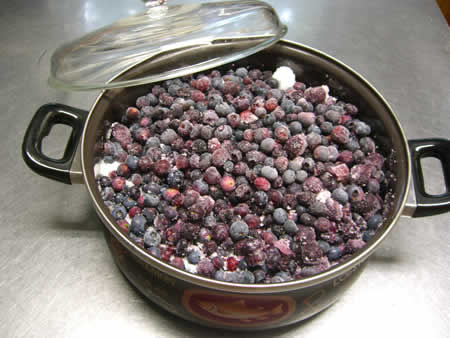
Prepare a pan, put some blueberry and sugar, then leave them for an hour or two. Some water comes out from blueberry to prepare the cooking process.
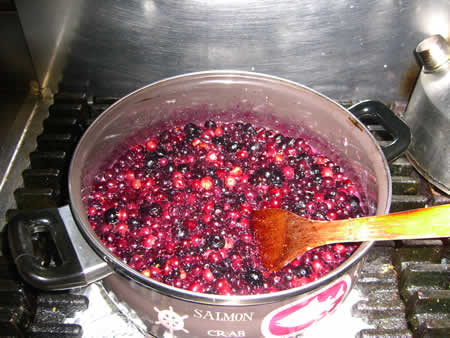
Make fire to cook blueberry jam. Make sure the fire should not be so strong. Sometimes stir it.
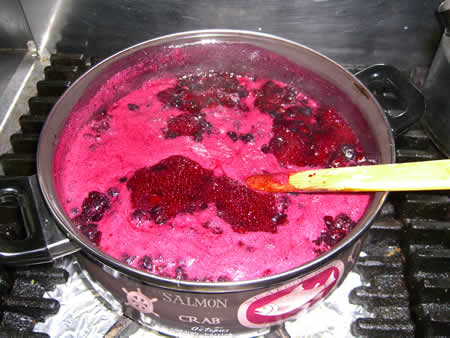
Make the fire weaker to simmer it. Roughly 30 minutes needed to boil/simmer this amount of blueberry jam. Not like making some apple jam which needs hours.
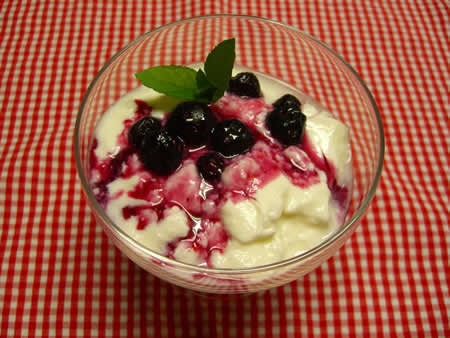
Blueberry jam on top of some yogurt with pepper mint, looks a cool dessert. You can freeze some blueberry jam in some packs for stocks, interesting thing is blueberry jam is never frozen completely if it's normal freezer temperture ( minus 18- minus 20C ).
Hayaokidori website

Prepare a pan, put some blueberry and sugar, then leave them for an hour or two. Some water comes out from blueberry to prepare the cooking process.

Make fire to cook blueberry jam. Make sure the fire should not be so strong. Sometimes stir it.

Make the fire weaker to simmer it. Roughly 30 minutes needed to boil/simmer this amount of blueberry jam. Not like making some apple jam which needs hours.

Blueberry jam on top of some yogurt with pepper mint, looks a cool dessert. You can freeze some blueberry jam in some packs for stocks, interesting thing is blueberry jam is never frozen completely if it's normal freezer temperture ( minus 18- minus 20C ).
Hayaokidori website
Wednesday, July 4, 2007
Making a layout #41 Sitting people vol.1
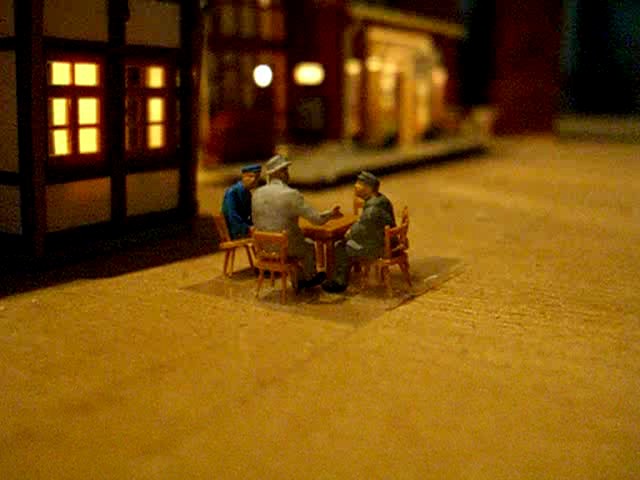
Just put a set of a table and 6 chairs for 3 male figures. Looks like a chat after work in front of a beer house.
Hayaokidori website
Monday, July 2, 2007
Making a layout #40 Kiosk
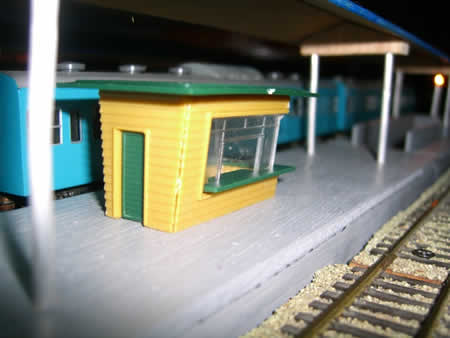
An item I really can not miss. I hear "Kiosk" is a Russian word. Not sure what English speaking people call it. Maybe just a "shop in a platform" ?
This also needs me to glue each and every wall to build up. Can not even cough!!
Would like to set a light and a shop staff inside.
Hayaokidori website
Japan from foreigners' point of view - alphabet
It seems that our country Japan and its culture are very unique for those who are interested in them. I got some questions from a couple of guests from U.S.A last night about our alphabet.
Customer : How many kanjis are there?
A lot often people ask that to me, it's perhaps like F.A.Q :-)
I usually answer that....
Even my tiny kanji dictionary has roughly 7,000 kanjis in it, so I guess perhaps more than 10,000. In my school days, we started learning 3 kanjis a day when we
were at the 3rd grade in elementary school. We had kanji examination every week
for the kanjis we had learned at the previous week. They say if we knew 1,000 kanjis, somehow we can survive in Japan, if we knew 2,000, we can read newspaper with no problems.
When I answer like above, most people are surprised with it.
Customer : Too many!!!! What if you found any kanjis you don't know?
Me: I need to see a kanji dictionary
Customer : How do you find the kanji if there were more than 10,000?
Me : Many kanjis are constituted by some parts like them in this mugcup below.
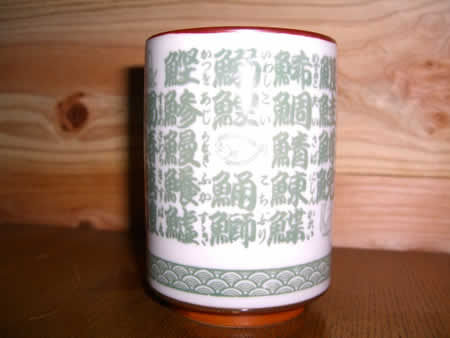
Kanjis in this mugcup are all fish related ones, they all have the kanji for "fish" at the left side. This "left" thingy in a kanji is what we call "Hen". If it's at the right side, we call it "Tsukuri". And they ( hen and tsukuri ) are both "Bushu" ( part of kanji ). The kanji fish has 11 strokes, so we need to see the 11 stroke kanji groups in a dictionary to find the "fish" hen. When we find the fish-hen, we need to check how many strokes the exact kanji has totally. If it's a fish related kanji, it must be more than 11 strokes because fish has already had 11. A kanji dictionary usually lists fewer strokes kanjis first, then more strokes kanjis later.
So if there's totally a 14 strokes fish related kanji, it could be listed earlier than 15 strokes fish related kanji.
When I complete to explain this and that like this, most people seem to have headache lol.....
Customer : How do you use the 3 kind of alphabet (Kanji, hiragana and katakana) differently?
Me : We use all the 3 mixed in a line!
Customer : What? How confusing it is, it's easier to describe a sentence only with hiragana, isn't it?
Me : Exactly yes and it's the best way if one were an elementary school kid who has never learn kanji yet. But once if you started learning kanjis, it's easier for you to understand what the senteces say when they include kanjis as well as hiragana because kanjis are ideograms, you can easily imagine what each and every kanji ( or kanji combinations ) say. If it's all described only with hiragana, you have to judge what "Hashi" exactly means for example by judging it from the context. Hashi could be "edge", "chopstick" or "bridge" in Japanese. If they were described in kanji, much easier for us to specify them because different kanji is applied to each.
Customer : Hum....
I guess perhaps this might be tough to understand for those who don't use ideograms as the main alphabet of their mother tongue. I also have a lot hard time to "write" some complicated kanjis even if I can read them.
Hayaokidori website
Customer : How many kanjis are there?
A lot often people ask that to me, it's perhaps like F.A.Q :-)
I usually answer that....
Even my tiny kanji dictionary has roughly 7,000 kanjis in it, so I guess perhaps more than 10,000. In my school days, we started learning 3 kanjis a day when we
were at the 3rd grade in elementary school. We had kanji examination every week
for the kanjis we had learned at the previous week. They say if we knew 1,000 kanjis, somehow we can survive in Japan, if we knew 2,000, we can read newspaper with no problems.
When I answer like above, most people are surprised with it.
Customer : Too many!!!! What if you found any kanjis you don't know?
Me: I need to see a kanji dictionary
Customer : How do you find the kanji if there were more than 10,000?
Me : Many kanjis are constituted by some parts like them in this mugcup below.

Kanjis in this mugcup are all fish related ones, they all have the kanji for "fish" at the left side. This "left" thingy in a kanji is what we call "Hen". If it's at the right side, we call it "Tsukuri". And they ( hen and tsukuri ) are both "Bushu" ( part of kanji ). The kanji fish has 11 strokes, so we need to see the 11 stroke kanji groups in a dictionary to find the "fish" hen. When we find the fish-hen, we need to check how many strokes the exact kanji has totally. If it's a fish related kanji, it must be more than 11 strokes because fish has already had 11. A kanji dictionary usually lists fewer strokes kanjis first, then more strokes kanjis later.
So if there's totally a 14 strokes fish related kanji, it could be listed earlier than 15 strokes fish related kanji.
When I complete to explain this and that like this, most people seem to have headache lol.....
Customer : How do you use the 3 kind of alphabet (Kanji, hiragana and katakana) differently?
Me : We use all the 3 mixed in a line!
Customer : What? How confusing it is, it's easier to describe a sentence only with hiragana, isn't it?
Me : Exactly yes and it's the best way if one were an elementary school kid who has never learn kanji yet. But once if you started learning kanjis, it's easier for you to understand what the senteces say when they include kanjis as well as hiragana because kanjis are ideograms, you can easily imagine what each and every kanji ( or kanji combinations ) say. If it's all described only with hiragana, you have to judge what "Hashi" exactly means for example by judging it from the context. Hashi could be "edge", "chopstick" or "bridge" in Japanese. If they were described in kanji, much easier for us to specify them because different kanji is applied to each.
Customer : Hum....
I guess perhaps this might be tough to understand for those who don't use ideograms as the main alphabet of their mother tongue. I also have a lot hard time to "write" some complicated kanjis even if I can read them.
Hayaokidori website
Subscribe to:
Posts (Atom)
